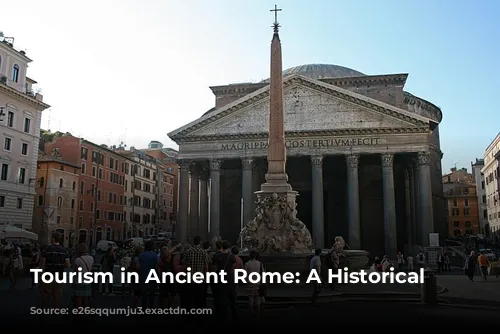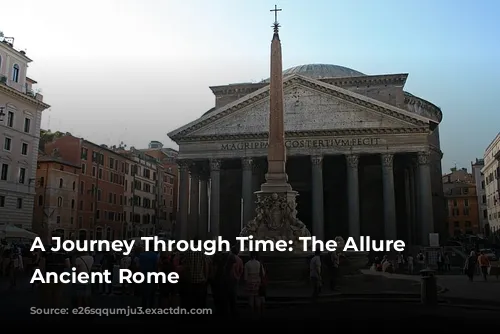Imagine stepping back in time, strolling through bustling streets filled with the sounds of merchants hawking their wares and the clatter of chariots. This was the reality of Ancient Rome, a city that captivated travelers from across the known world. Tourism wasn’t a modern invention; it was a vital part of Roman life, influencing the city’s economy, culture, and even shaping the world as we know it today.

Rome’s Rise as a Tourist Hotspot
Ancient Rome was a metropolis brimming with captivating attractions. Visitors flocked to witness its grandeur firsthand – the awe-inspiring Colosseum, the majestic Pantheon, and the historical Roman Forum stood as testaments to the Romans’ engineering prowess and architectural brilliance. The city’s vibrant culture was another major draw, with theaters, amphitheaters, and other venues hosting spectacular events like gladiatorial games, chariot races, and theatrical performances. These events were a feast for the senses, drawing in crowds eager to experience the thrill of the games or lose themselves in captivating stories.
From the Republic to the Empire: Tourism Evolves
The allure of Rome grew over time. During the Republic, the city’s focus was on religious pilgrimages and political gatherings. However, under the Empire, tourism took on a more organized, commercialized form. Guidebooks appeared, travel agencies emerged, and lodging facilities developed to cater to the growing number of visitors.
But times changed. By the 4th-6th centuries, Late Antiquity, the city’s tourism industry experienced a decline, influenced by political instability, economic hardship, and the rise of Christianity. Despite these fluctuations, tourism remained an integral part of Ancient Rome, influencing its identity and economy.
The Road to Rome: A Journey Through Time
Traveling to Ancient Rome wasn’t as easy as hopping on a plane. The Romans were masters of infrastructure, and their extensive road network connected the vast empire, making travel safer and faster than in other parts of the world. These well-maintained roads allowed travelers to reach Rome, where they had various accommodation options.
For those seeking basic comfort, inns offered lodging and meals at affordable prices. Wealthier travelers could opt for luxurious private homes or villas, renting these elegant spaces for a more personalized experience.
The Impact of Tourism: A City Transformed
Ancient Rome’s economic prosperity was closely intertwined with tourism. The influx of visitors boosted trade, bringing merchants and traders to the city to sell their wares. The production of souvenirs was a major industry, with tourists purchasing pottery, jewelry, and figurines to remember their Roman adventures. The entertainment industry also thrived on tourism, with the Colosseum and Circus Maximus hosting grand events that drew in locals and visitors alike.
Beyond Sightseeing: Cultural Exchange in Ancient Rome
Tourism wasn’t just about sightseeing; it was a bridge connecting diverse cultures. Visitors were immersed in Roman life, absorbing knowledge of art, literature, philosophy, and engineering. In turn, they brought their own customs and traditions to Rome, creating a rich tapestry of cultural exchange.
Religious pilgrimages also played a significant role, as people from different parts of the world visited holy sites, bringing their own beliefs and practices. This cross-cultural exchange shaped the development of Christianity in Rome and played a crucial role in spreading knowledge and ideas throughout the world.
The Enduring Legacy of Ancient Rome
Today, the ruins and monuments of Ancient Rome continue to attract millions of visitors every year, making it one of the most popular tourist destinations globally. As we explore these ancient wonders, we can’t help but be reminded of the profound impact tourism had on the city, its economy, and its culture. It’s a testament to the enduring allure of a city that captivated travelers centuries ago and continues to fascinate us today.
